It's a clean slate for the roof of this historic Welsh cottage in Peach Bottom
A four-generation Peach Bottom Township slate roofing company has restored the roof of the original Welsh immigrant cottage in Coulsontown, near where the slate was quarried by these workers. Peach Bottom slate was quarried for almost 100 years and was used on the grand, 250-room, Biltmore Estate in Asheville, North Carolina.
Purchased in 2019, by Old Line Museum, the cottage complements two others like it that were purchased a decade earlier. One of those cottages, which is almost completely original, is about 95 percent complete and available for inside tours.
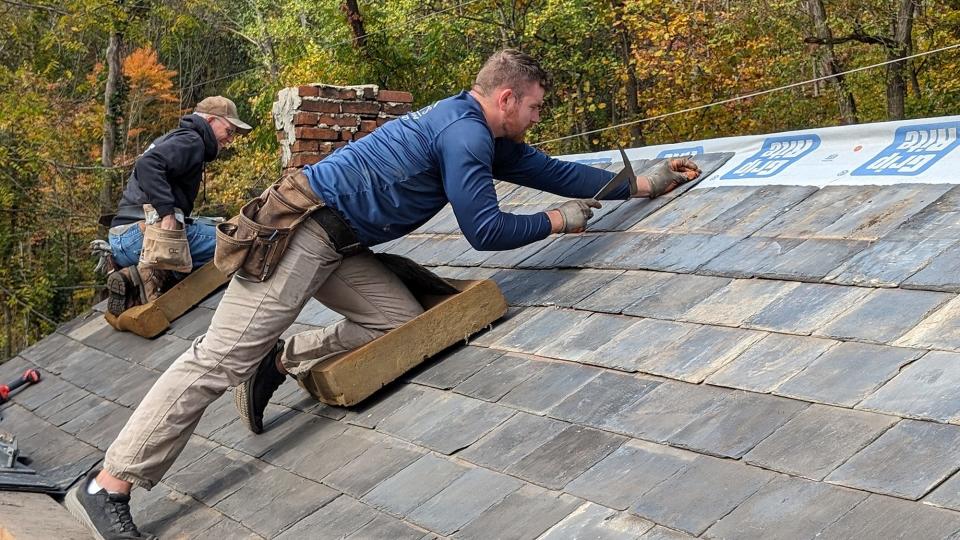
About one-third of the slate used on the roof is original to the 1850s building. According to Don Robinson with the Old Line Museum, a barn next to the structure burned decades ago and damaged one side of the building and the roof. The slate roof was removed and kept on the property. Most of it was thrown out while the museum was in the process of purchasing the property.
The rest of the roof, which was installed last week, was donated by a homeowner of an 1890s house in Street, Maryland, Robinson said. Peach Bottom slate was last quarried in 1942, according to Bob Stewart, a third generation slate roofer with Stewart’s Roofing and Painting of Peach Bottom Township.
Stewart began slate roofing when he was 13. He said he was “part-time” for 35 years. Most of that time he was a full-time school teacher. Once he retired, he started working “full-time” as a slate roofer and has been at it for nine years.
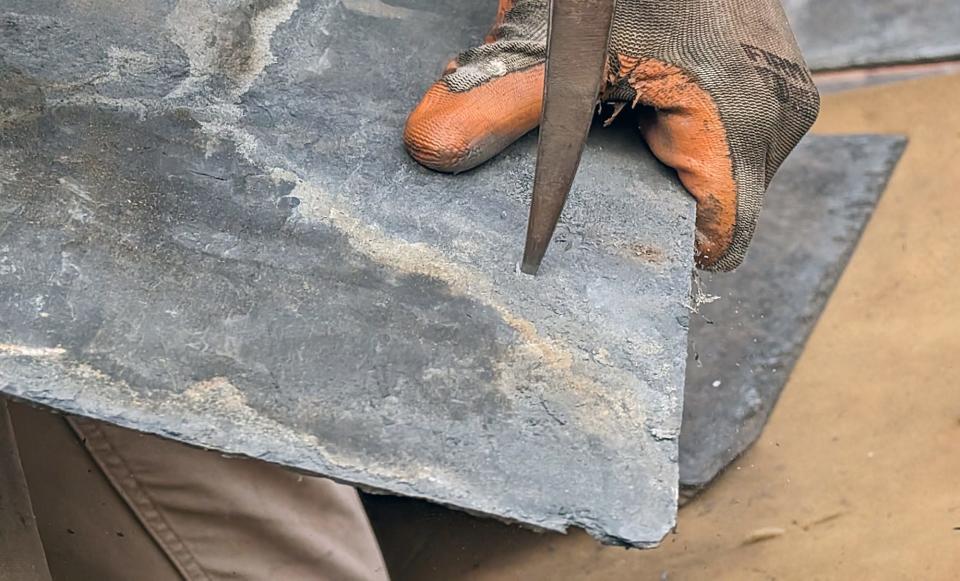
Stewart’s grandfather Harvey was also a slate roofer and contractor who built several barns in the area.
Stewart’s son Ben attached the top rows of slates to the roof last week, while his father handed up the next batch of recycled slates. The roof will receive a copper cap, Stewart said.
“It was all quarried right across the ridge," Stewart said, standing on the roof and pointing north over the peak.
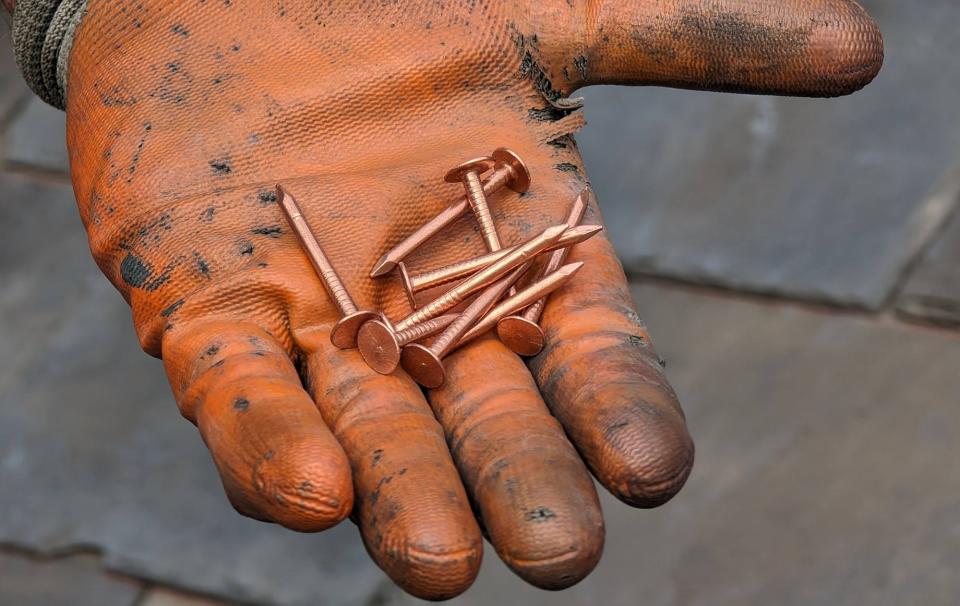
“High concentrations of silica and aluminum, which makes it dense and it is known to maintain its color … stays even throughout its life,” Stewart explains the durable composition of Peach Bottom Slate or Delta Slate, terms that he sometimes used interchangeably.
Stewart explains that slate roofing isn’t a low-cost option because the roofer can’t use a nail gun, it’s all hand labor – but it lasts a long time. “Up to 400 years (for Peach Bottom slate), but no one has been around long enough to know,” he adds. There are different grades of slate that determine how long it will last, his son Ben describes the grading process, and adds that Peach Bottom slate has the highest grade.
What usually fails on 100-year-old slate roofs are the iron fasteners, Stewart explains. The new nails used on the Welsh cottage are copper so they shouldn’t deteriorate as fast. He speculates that with periodic maintenance, the recycled slate roof should easily last another century.
See when cottage was purchased: 1850s Welsh quarrymen's cottage being preserved in southern York County
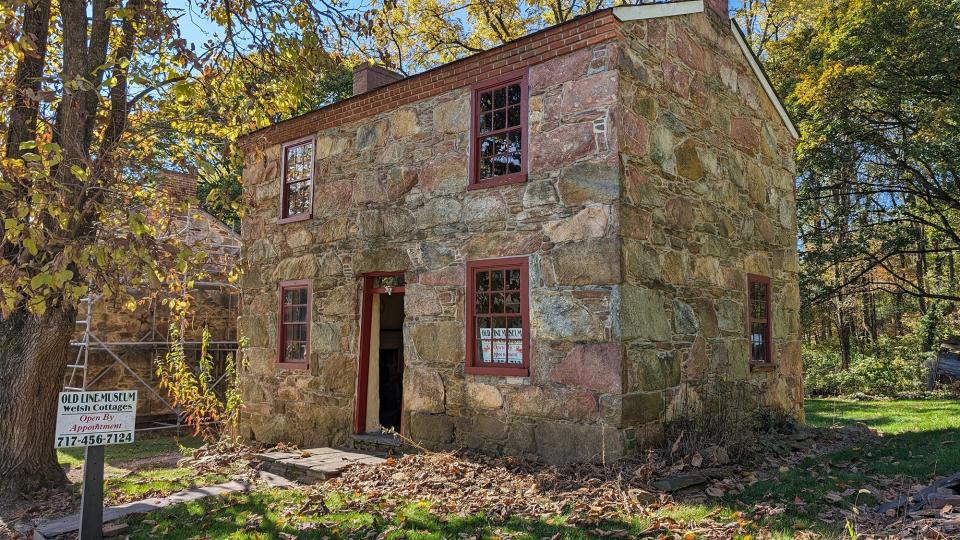
The earliest deed for Coulsontown, according to Robinson, is a well right deed from 1855 that allowed use of a well. He speculates that the four stone cottages were built between 1850 and 1860. There are early maps that confirm these dates.
According to the Old Line Museum, Peter Williamson, a Scots-Irish immigrant, bought the property that included Peach Bottom slate deposits. There was a great need for slate workers, and he sent word back to Wales about skills needed in the United States. Those workers brought their old world skills and architecture, building what we see today for their own homes in Coulsontown.
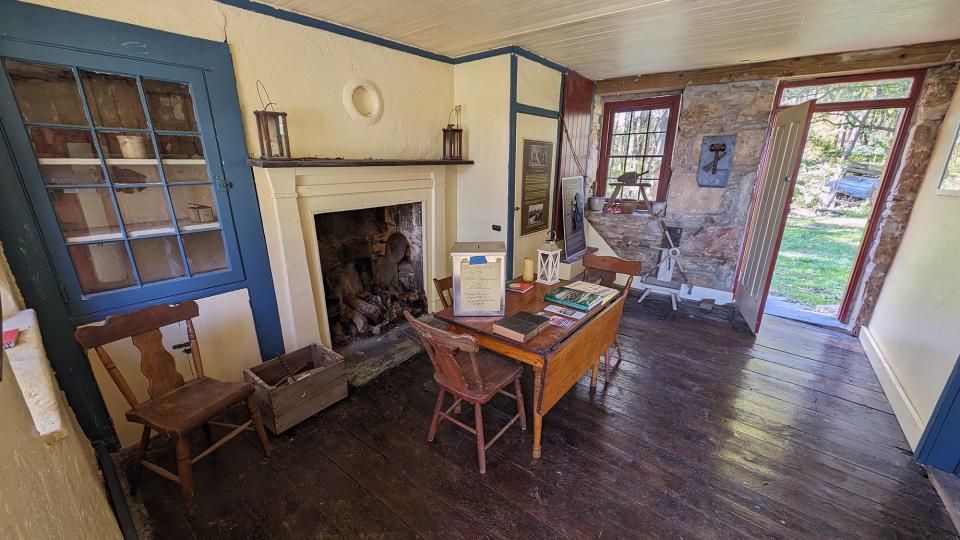
According to the museum, by 1890, some 600 Welsh immigrants were living in the Peach Bottom area. By the early 20th century the slate industry was in decline, but their legacy remains in the humble yet sturdy stone cottages of Coulsontown. Their work also lives on in the roof of the 175,000-square-foot Biltmore Estate in Asheville, NC, according to Bob Stewart.
You can visit the exteriors of the Coulsontown Cottages with an exterior interpretive display, on Green Road in Peach Bottom Township. Or visit by appointment and see more by calling the Old Line Museum at (717) 456-7124.
I have captured life through the lens since 1983, and am currently a visual journalist with the USA Today Network. You can reach me at pkuehnel@ydr.com.
This article originally appeared on York Daily Record: Peach Bottom, Pa. Welsh cottage restored with same slate as Biltmore

